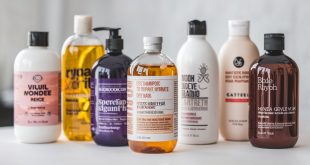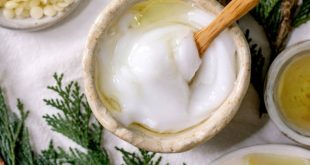In a world full of skincare treatments, there’s one essential step you might be overlooking: deep hydration. Ever feel like your skin is just parched, no matter how much moisturizer you apply? That’s because, sometimes, your skin craves more than what daily products can offer. Here’s where Hydration Facials come in—a luxurious, effective way to quench your skin’s thirst and give it a radiant, dewy glow. In this article, we’ll explore the ins and outs of hydration facials, their benefits, and why they might just be the ultimate solution for your skincare routine.
1. Introduction to Hydration Facials
Hydration facials are a skincare treatment designed to deeply moisturize and rejuvenate your skin. Unlike typical facials that focus on cleaning and exfoliating, hydration facials deliver intense hydration straight to your skin cells, helping them retain moisture and look plumper and more youthful. Imagine your skin as a sponge: without enough water, it becomes dry and cracked. A hydration facial is like soaking that sponge, leaving your skin smooth, soft, and radiant.
2. Why Does Your Skin Need Extra Hydration?
You may think, “I already use moisturizer daily; isn’t that enough?” In reality, environmental factors like pollution, sun exposure, and even air conditioning can zap the moisture right out of your skin. As we age, our skin naturally loses its ability to retain water, leading to dryness and fine lines. Dehydrated skin is often dull and lacks elasticity, making hydration facials a powerful way to counteract these effects.
3. How Hydration Facials Work
Hydration facials usually involve a multi-step process that focuses on replenishing moisture and boosting skin health. Here’s how it typically works:
- Cleansing – First, your skin is thoroughly cleansed to remove impurities.
- Exfoliation – Gentle exfoliation helps clear away dead skin cells, allowing the hydration to penetrate better.
- Hydration Serum Application – A specially formulated serum packed with hyaluronic acid or other humectants is applied to deliver deep hydration.
- Masking and Moisturizing – Finally, a hydrating mask and moisturizer lock in the benefits, ensuring lasting moisture.
This combination of techniques targets deep layers of the skin, providing hydration that lasts well beyond what your daily products can achieve.
4. Benefits of Hydration Facials
Hydration facials offer a range of benefits that go beyond just moisturized skin:
- Enhanced Glow: Hydrated skin appears plumper and more radiant.
- Reduced Fine Lines: Dehydration can make lines and wrinkles appear deeper. Hydration facials soften their appearance.
- Improved Skin Texture: Regular hydration helps your skin feel smooth and silky.
- Better Product Absorption: Hydrated skin is more receptive to other skincare products, improving their effectiveness.
By keeping your skin well-hydrated, you’re giving it a solid foundation for long-term health and beauty.
5. Who Should Consider Hydration Facials?
If your skin feels dry, tight, or dull, a hydration facial may be just what you need. Here are some signs that indicate your skin could benefit from this treatment:
- Persistent dryness or flakiness
- Fine lines caused by dehydration
- Dull or rough skin texture
- Post-sun exposure skin in need of a boost
However, it’s not just for dry skin types—hydration facials can benefit anyone, as hydration is a universal need. Even oily skin can suffer from dehydration, often causing the skin to produce even more oil in response.
6. Types of Hydration Facials
Not all hydration facials are the same. Depending on your skin type and concerns, you may encounter a few different options:
- Basic Facial – A simple, effective facial that focuses on moisture.
- Oxygen Facial – Uses oxygen-infused products to stimulate cell renewal.
- Collagen Facial – Perfect for aging skin, this treatment focuses on boosting collagen levels along with hydration.
- Hyaluronic Acid Facial – Hyaluronic acid, a super hydrator, is the main ingredient to draw moisture deeply into the skin.
Each type brings a unique benefit, so it’s essential to choose one that aligns with your skin’s specific needs.
7. What to Expect During a Hydration Facial
Walking into a spa for a facial? Here’s a general idea of what the session might involve:
- Consultation – The esthetician will examine your skin and discuss any concerns.
- Preparation – You’ll relax as your face is cleansed and prepped.
- Main Treatment – The serum, mask, and moisturizers are applied in layers.
- Massage – Some treatments may include a facial massage to help with circulation and absorption.
A hydration facial usually takes around 60 to 90 minutes, making it a great treat for your skin and a mini-relaxation session for you.
8. Aftercare Tips for Prolonged Hydration
Post-facial care is crucial to making the benefits last. Here are a few tips:
- Avoid Harsh Cleansers: Stick to gentle cleansers for a few days after your facial.
- Moisturize Daily: Keep up with a hydrating moisturizer to extend the effects.
- Stay Hydrated: Drink plenty of water to keep your skin hydrated from the inside out.
- Avoid Direct Sun Exposure: Use SPF to protect your refreshed skin from UV damage.
Following these aftercare tips helps your skin stay hydrated, smooth, and glowing.
9. DIY vs. Professional Hydration Facials
While you can certainly try at-home hydration facial, professional facials offer a more intensive treatment. Here’s a quick comparison:
- DIY Facials: Cost-effective and convenient, but they lack the depth of hydration and expertise.
- Professional Facials: Deeper hydration and professional-grade products, although they come with a higher price tag.
For lasting benefits, a mix of both can be ideal—use DIY facials for maintenance and indulge in professional treatments periodically.
10. Comparing Hydration Facials with Other Skin Treatments
How do hydration facial stacks up against other treatments like chemical peels or microdermabrasion? Here’s a quick look:
- Hydration Facial – Best for deep moisture, soothing effects, and a quick glow.
- Chemical Peels – Effective for exfoliation but can leave the skin dry.
- Microdermabrasion – Great for smoothing texture but doesn’t add moisture.
Each treatment has its strengths, but if hydration is your goal, a hydration facial is the top choice.
11. Frequently Asked Questions about Hydration Facials
1. How often should I get a hydration facial?
Every 4-6 weeks is ideal for maintaining hydration, although individual needs vary.
2. Can I do a hydration facial at home?
Yes, DIY facials can be done at home, but they’re usually less intensive than professional treatments.
3. Is a hydration facial safe for sensitive skin?
Generally, yes. Hydration facial are gentle, but it’s best to discuss any sensitivities with your esthetician.
4. Can oily skin benefit from hydration facials?
Absolutely! Dehydration can cause oily skin to overcompensate, so hydration facial are helpful for all skin types.
5. How long do the results of a hydration facial last?
Results can last up to a month, especially with proper aftercare and moisturizing.
12. Final Thoughts on Hydration Facials
Hydration facials are more than a luxury—they’re a practical, effective way to give your skin the moisture it craves. Whether you’re battling dryness, dullness, or just want a radiant glow, hydration facial offers a solution that goes beyond regular moisturizers. So, if your skin’s feeling thirsty, why not indulge it with a hydration facial? Your skin will thank you with a healthy, dewy glow.
 Daily Blogger News Stay updated with the latest trends and insights. Your reliable source for daily updates and information.
Daily Blogger News Stay updated with the latest trends and insights. Your reliable source for daily updates and information.







